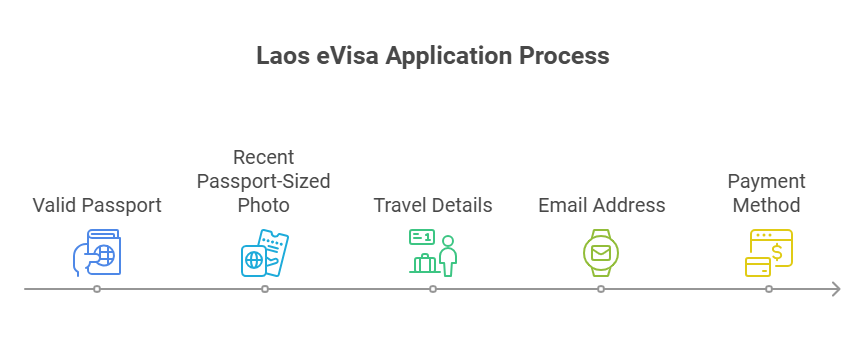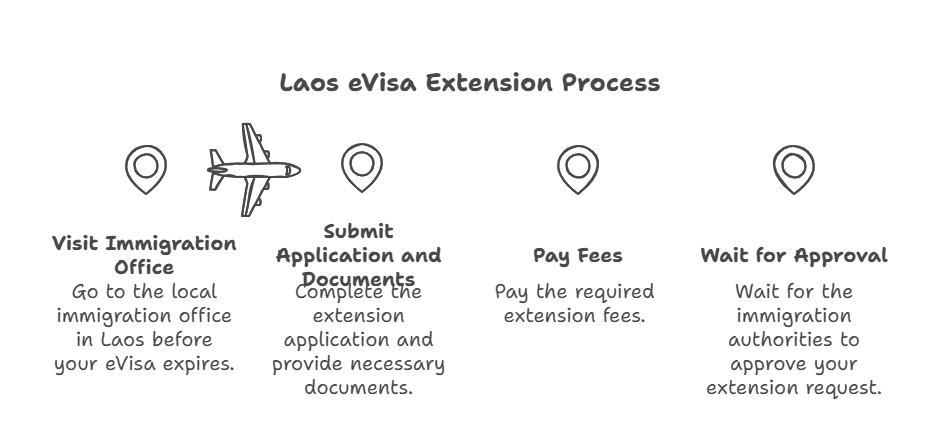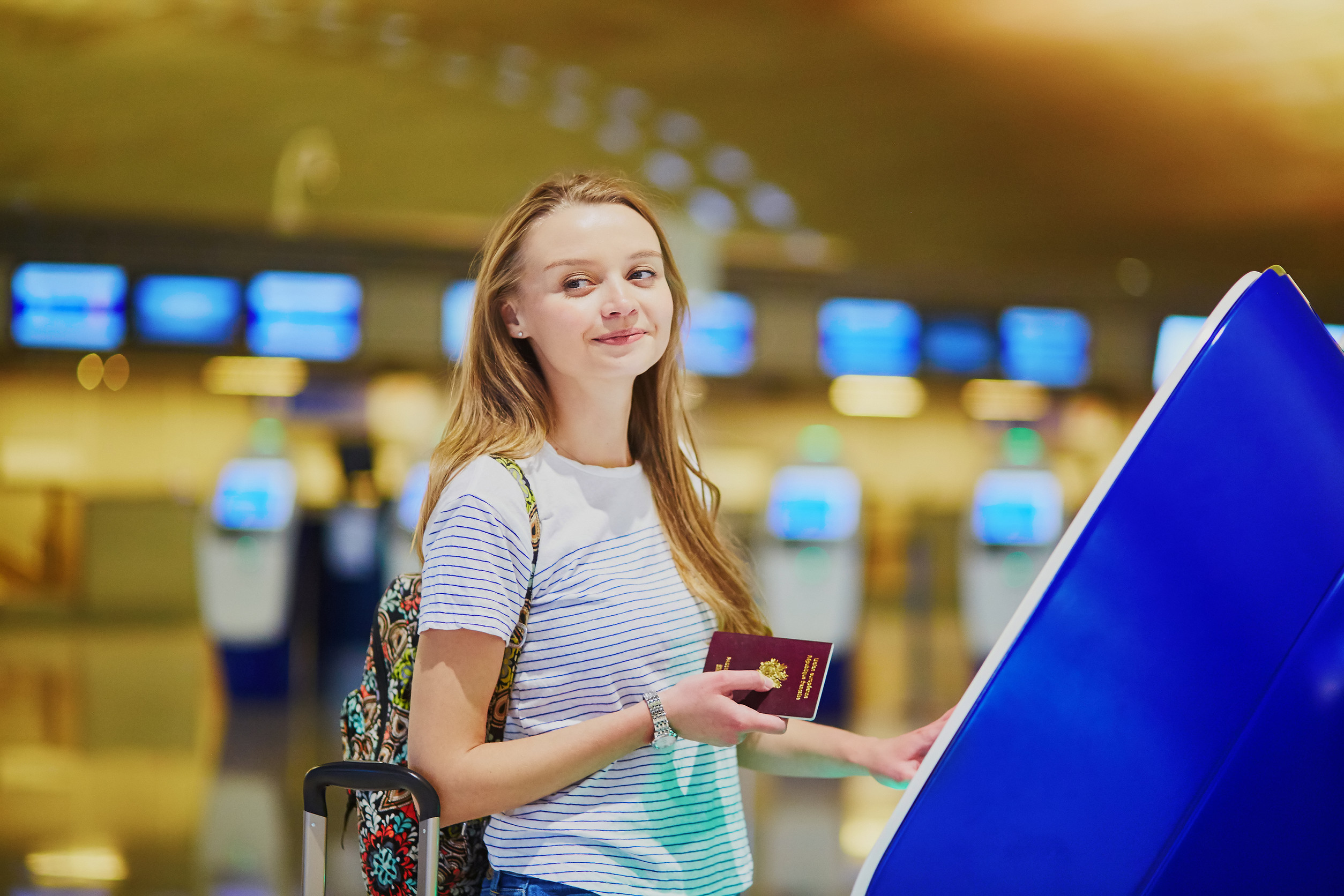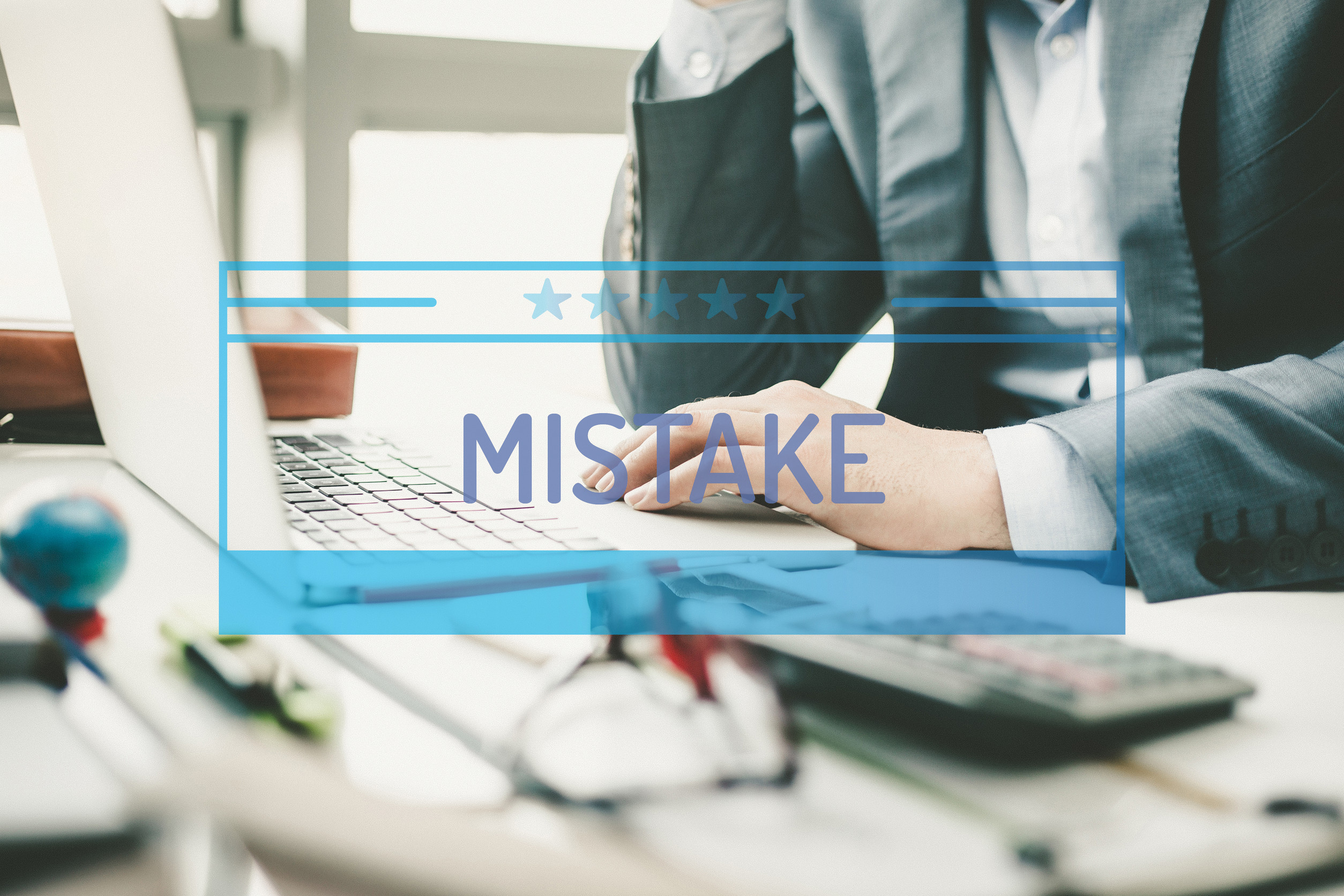The Laos eVisa is an easier and convenient way for eligible travelers to enter the country for tourism and short-term visits. Several have inquiries about the application process, eligibility, cost, and other do's and don'ts regarding this electronic visa with growing interest in hassle-free travel. This page provides the answers to some of the frequently asked questions that will make your eVisa application easy and assure you of a smooth entry into Laos.
1. What Is a Laos eVisa?
The Laos eVisa is an official electronic travel authorization that allows eligible travelers to enter Laos for tourism or other short-term purposes. This digital system simplifies the visa application process, enabling travelers to apply online without needing to visit an embassy or consulate. Applicants complete an online form, upload required documents like a passport and photo, and pay the visa fee. Once approved, the eVisa is sent via email and can be presented to immigration authorities upon arrival.
Designed primarily for tourists, the eVisa permits a single-entry stay of up to 30 days and is accepted at key entry points such as Wattay International Airport and the Lao-Thai Friendship Bridges. It is a convenient option for travelers from many countries, offering a fast and straightforward way to secure a visa for Laos.
2. Who Is Eligible for a Laos eVisa?
The Laos eVisa is available to travelers from a wide range of countries, making it an accessible option for international visitors. Eligible countries include Albania, Argentina, Australia, Austria, Belgium, Brazil, Canada, China, Denmark, Egypt, Finland, France, Germany, India, Ireland, Italy, Japan, Malaysia, Mexico, Netherlands, New Zealand, Norway, Saudi Arabia, Singapore, South Africa, Spain, Sweden, United Kingdom, United States, Vietnam, and many others. This extensive list encompasses nations across Europe, Asia, Africa, the Americas, and Oceania, allowing citizens from these countries to apply online for a seamless entry into Laos.
3. How Long Is the Laos eVisa Valid For?
The Laos eVisa is generally valid for 60 days from the date of issuance, providing flexibility for travelers to plan their trips within this timeframe. This visa permits a single entry into Laos, with a maximum stay of up to 30 days for tourism or other short-term purposes. Travelers should ensure that their trip does not exceed the 30-day limit, as overstaying can lead to penalties or fines imposed by Laos immigration authorities. Additionally, if you wish to extend your stay, it is essential to apply for an extension before the visa expires, as overstaying without authorization could complicate future travel plans or applications for Laos visas.
4. What Documents Are Required for a Laos eVisa?
To apply for a Laos eVisa, applicants must provide several key documents to ensure their application is processed smoothly. These include:
These documents should be carefully prepared and submitted during the online application process to avoid delays or rejections. Additional documents may be requested.
5. How Long Does It Take to Process a Laos eVisa?

The processing time for a Laos eVisa typically ranges between 5 - 7 Working Days from the date of submission. However, this timeframe may vary depending on several factors, such as the volume of applications being handled. During peak travel seasons, such as holidays, festivals, or popular tourist months, the demand for visas increases significantly, potentially causing processing delays.
To avoid any last-minute issues, it is highly recommended that applicants submit their eVisa application at least 1 to 2 weeks before their planned travel date. This buffer period provides enough time to accommodate unexpected delays and ensures you receive your eVisa in time for your trip. Travelers should also monitor updates on the official Laos eVisa website for any announcements regarding extended processing times, especially during high-demand periods.
6. Are Expedited Services Available for a Laos eVisa?
Yes, expedited services are available for travelers who require faster processing of their Laos eVisa application. This option is ideal for those with urgent travel plans or last-minute arrangements. By opting for expedited processing, applicants can expect their eVisa to be approved within 1 - 3 Hours, significantly faster than the standard 5 - 7 Working Days.
However, it’s important to note that an additional fee is charged for this service. Travelers should carefully review the requirements and ensure their application is complete and accurate to avoid delays, even when using expedited processing.
7. How Much Does the Laos eVisa Cost?

The cost of Laos eVisa depends on several factors, primarily the applicant’s nationality and the processing option chosen. Different countries may have varying fee structures, reflecting bilateral agreements or administrative considerations. Additionally, travelers can select standard or expedited processing, with faster services typically incurring higher charges.
Applicants should carefully review the fee structure on the official eVisa portal to ensure they are aware of the exact cost before submitting their application. It’s also important to note that the eVisa fee is non-refundable, even in cases where an application is rejected or delayed due to errors.
8. Can the Laos eVisa Be Extended?
The Laos eVisa itself is not directly extendable through the online system. However, travelers who wish to stay longer in Laos beyond the validity period of their eVisa can apply for an extension by visiting the immigration office within Laos. The extension process involves submitting a formal application, providing necessary supporting documents, and paying applicable fees. Approval of the extension request is at the discretion of the immigration authorities and depends on factors such as the purpose of the extended stay and compliance with local visa regulations. Travelers are advised to apply for the extension before their eVisa expires to avoid penalties for overstaying.
Here are the steps involved in Laos eVisa extension:

9. What Are the Approved Entry Points for a Laos eVisa?
The eVisa is valid at the following entry points:
- Wattay International Airport (Vientiane Capital)
- Luang Prabang International Airport
- Pakse International Airport (Champasack Province)
- Lao-Thai Friendship Bridge I (Vientiane Capital)
- Lao-Thai Friendship Bridge II (Savannakhet Province)
- Lao-Thai Friendship Bridge IV (Bokeo Province)
- Boten International Checkpoint (Luang Namtha Province)
- Boten Railway Station (Luang Namtha Province)
Travelers should confirm the latest list of approved checkpoints before arrival.
10. What Happens If My Application Is Rejected?
If your Laos eVisa application is rejected, you will receive a notification explaining the reason for the denial. Common reasons for rejection may include
- Incomplete or incorrect information,
- Failure to meet the eligibility requirements, or
- Issues with the submitted documents.
After receiving the rejection notice, you can address the issue by correcting the mistakes or providing additional documentation. Once the issue is resolved, you can reapply for the eVisa. Alternatively, you may choose to apply for a different type of visa, such as a visa on arrival or an embassy visa, depending on your circumstances. In some cases, the embassy or consulate may provide guidance on the best course of action to take. It is essential to thoroughly check your application and ensure all required documents are correct and complete to avoid delays or rejections.
11. Can I Use My Laos eVisa for Multiple Entries?
The Laos eVisa is valid for a single entry only, meaning once you exit the country, you cannot use the same eVisa to re-enter. If you plan to leave Laos and return during your trip, you will need to apply for a new eVisa. Alternatively, travelers who anticipate multiple entries may want to explore other visa options that allow for multiple entries, such as a traditional business visa or a tourist visa, which may offer more flexibility. Be sure to carefully plan your trip and apply for the appropriate visa based on your travel needs.
12. Is the Laos eVisa Approval Guaranteed for Travelers?
While the Laos eVisa is a convenient and efficient option for many travelers, approval is not guaranteed. Applications may be denied if the provided information or documents do not meet the specific requirements set by the government. Common reasons for denial include discrepancies or errors in personal details, passport information, or missing documentation. To maximize the chances of approval, applicants should ensure that all information is accurate, complete, and consistent with the supporting documents. It is also essential to carefully follow all instructions provided on the official eVisa website. If an application is denied, travelers may need to resolve any issues and reapply, potentially using a different visa type if necessary.
13. What Should I Do If My eVisa Is Delayed?
If your Laos eVisa processing takes longer than expected and exceeds the usual timeframe, it is important to take action promptly. First, contact the Laos eVisa support team through the official website or the provided contact channels to inquire about the status of your application. They may be able to provide updates on the processing timeline or inform you of any issues affecting your application.
To minimize the impact of any potential delays, it is advisable to apply for your eVisa well in advance of your planned travel date. This ensures that you have enough time to address any unexpected issues that may arise, such as delays in processing or requests for additional documentation. In cases where the delay causes significant travel disruptions, you may also want to explore other visa options, such as applying for a visa on arrival or embassy visa, as alternatives.
14. Do Children Need a Separate eVisa?

Yes, children are required to have their own separate Laos eVisa, even though they may be traveling with parents or guardians. Parents or guardians must apply on behalf of minors and ensure that the necessary documents, such as the child’s passport and photo, are submitted along with the application. Each child, regardless of age, will be issued an individual eVisa, and it is important to provide accurate details for every traveler, including minors, to avoid delays or issues with entry into Laos.
15. Can I Apply for a Laos eVisa While Traveling?
As long as you have internet access and the required documents, you can apply for a Laos eVisa from anywhere. Ensure your application is submitted before your intended travel date to avoid delays. However, it’s important to remember that the eVisa process requires accurate details, so it’s best to apply well in advance to avoid any issues with last-minute corrections. Also, keep in mind that approval times can vary depending on the volume of applications, especially during peak seasons, so plan accordingly. Lastly, having a stable internet connection during the application process can help prevent interruptions that could delay submission.
16. Can I Modify My Laos eVisa Application After Submission?

Once your Laos eVisa application has been submitted, it cannot be modified. The information provided during the application process is final, and changes cannot be made after submission. If you realize that there is an error or if you need to update any details after submitting your application, you will need to withdraw the current application and submit a new one with the correct information.
It is important to double-check all details, such as personal information, passport details, and travel plans, before submitting the application to avoid the need for corrections. If your application is already processed or approved, you may need to explore alternative visa options if you require any changes.
17. Is the Laos eVisa Processing Fee Refundable?
No, the Laos eVisa processing fee is non-refundable. Once the payment is made, it cannot be refunded, even if your application is rejected or if you choose to cancel it. It is essential to ensure that all details in your application are accurate and complete before submitting it to avoid any complications or rejections. If your application is denied, you will not be able to recover the processing fee. Therefore, it is recommended to carefully review your application and the visa requirements before proceeding with the payment.
18. Do I Need to Print My eVisa?
Yes, travelers are required to print a copy of their approved Laos eVisa and present it at the immigration checkpoint upon arrival. A digital copy or a screenshot of the eVisa may not be accepted. It is important to ensure that the printed version of your eVisa is clear and legible, as this will be necessary for your entry into Laos. Keep it with your passport and other travel documents to ensure a smooth immigration process.
19. What Happens If I Overstay My Laos eVisa?
Overstaying your Laos eVisa can have serious consequences:
- Fines: You will be subject to fines, typically calculated as a daily rate for each day of overstay.
- Legal Issues: In some cases, overstaying your visa can lead to legal trouble, including potential detention or deportation.
- Travel Restrictions: Overstaying can have long-term consequences, such as difficulty obtaining visas for future travel to Laos or other countries.
Important Notes
- Visa Extensions: If you need to extend your stay beyond the initial visa validity, you must apply for an extension through the immigration authorities.
- Check Regulations: Visa regulations can change, so always check the latest information from the official Laotian government sources or the nearest Laotian embassy/consulate before your trip.
20. Can I Use a Laos eVisa for Business Purposes?
No, the Laos eVisa is specifically designed for tourism and short-term visits only. It cannot be used for business activities, such as attending meetings, conferences, or conducting business-related work. If you are traveling to Laos for business purposes, you will need to apply for a business visa instead. Be sure to apply for the correct visa type to ensure compliance with Laos' entry requirements.
Conclusion
The Laos eVisa simplifies the visa application process for eligible travelers, but it’s essential to understand its rules and limitations. By following the requirements and submitting a complete application, you can enjoy a hassle-free trip to Laos. If you have specific concerns, consult the official eVisa website or contact their support team for assistance.
Content Disclaimer: While this information was last updated in January 2025, we strongly suggest confirming all travel details with the appropriate governmental agencies, embassies, and airlines.
